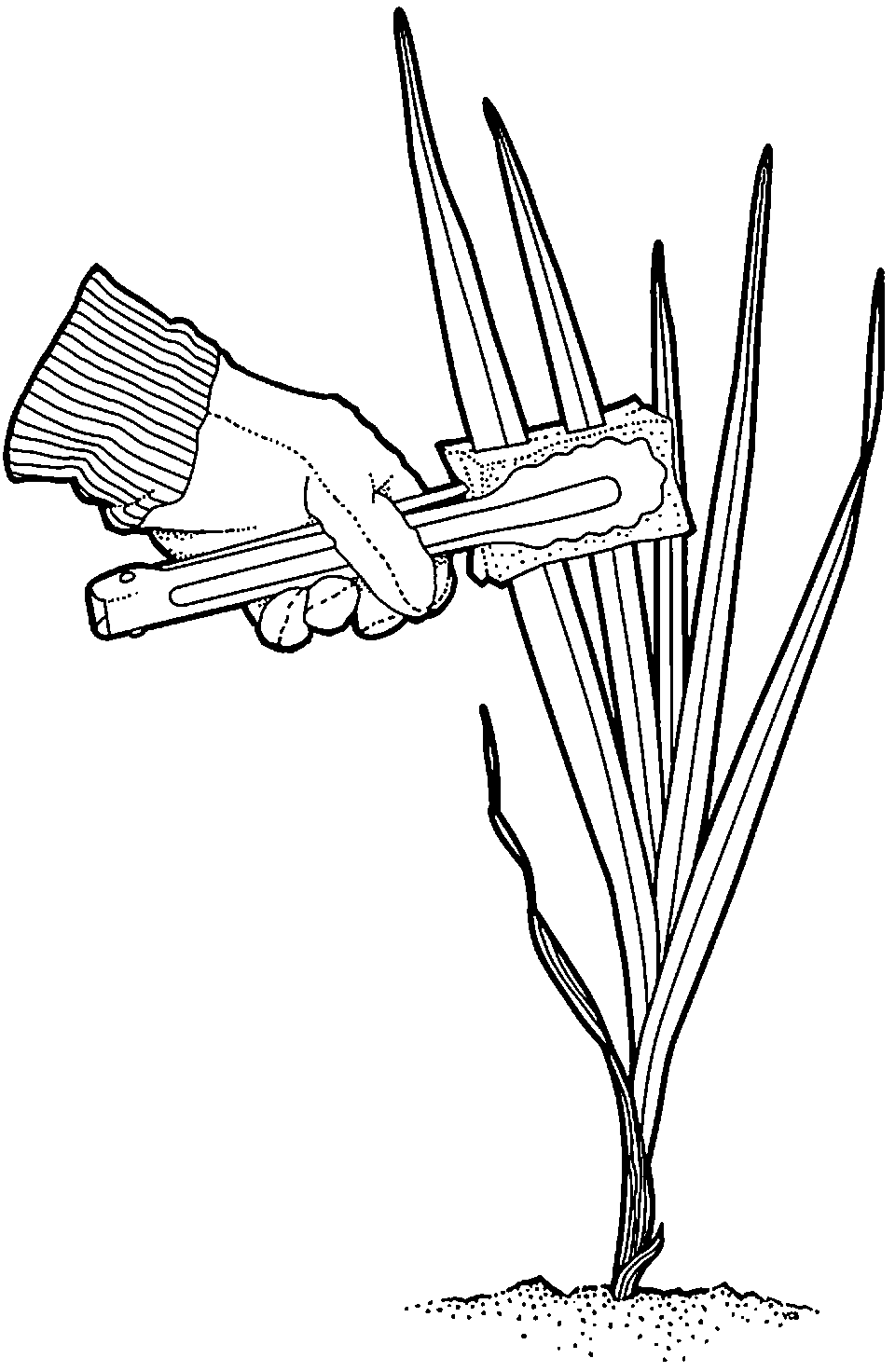Kniphofia uvaria
Family: Asphodelaceae
Type of weed: With underground regrowth structures
Flower colour(s): Orange-red
Description
- Red Hot Poker is a large, hardy perennial lily to about 1.5m from southern Africa. It has a thick clumping habit, and will tolerate most conditions. A garden ornamental, currently heavily promoted as ‘water-wise’.
- Stiff, slightly fleshy narrow leaves to 90cm long rise from the base. They have a V-shaped profile, and a distinct keel-shaped mid-vein on the underside.
- A large torch-like cluster of small drooping tubular flowers, usually of two colours, rises above the foliage on a stout erect stem. These flowers produce copius bird-attracting nectar. Flowers in late summer.
- Each small flower produces a capsule containing many seeds.
Dispersal
Seeds are wind blown, can travel on tyres, shoes, clothing and in soil. Red Hot Poker clumps vigorously, spreads by and regrows from its rhizomes, and from garden dumping on bushland edges.
Impact on bushland
Red Hot Poker seeks out sensitive and fragile bushland such as swamps, moist forest and creeklines. It spreads rapidly, its dense clumps excluding the roots of other plants and preventing the germination of their seeds. Regenerates strongly and spreads widely after fire.
Distribution
Upper Blue Mountains. Capable of spreading throughout the Blue Mountains.
Alternative planting
Native plants
Flowers and/or fruit to attract birds, as well as being water-wise:
- Local Banksias, Hakeas, Grevilleas, Callistemons
- Flax Lilies (Dianella species)
- Saw-sedges (Gahnia species)
Council provides a tool, on its Mountain Landscapes website, to help you choose native alternative plantings. Choose your village, soil, vegetation community and the purpose of your planting, and the tool will give you suggestions.
There are native nurseries in several Blue Mountains villages, including Glenbrook, Lawson and Katoomba. Please also ask at your favourite local nursery.
Exotic alternatives
Most exotic lilies have weed potential.
- Escallonia (Escallonia macrantha)
Control
- Remove flowers, fruit, pods or seeds
- Manually remove bulbs, corms and tubers
- Stem swipe
Manual control
Manual removal
Move leaf litter away from base of plant. Dig down next to the stem until the bulb or tuber is reached. Remove plant and carefully bag the bulb or tuber.
Remove seeds, pods or fruit
Gently remove any seeds, pods or fruit and carefully place in a bag.
Chemical control
Note: Herbicides that may be used for this weed include Glyphosate.
Stem swiping

As always with poisons, see the Herbicide page for information about when to use herbicides — and how to use them effectively and safely.
This method is suitable for herbaceous plants with bulbs, tubers or corms (See Montbretia fact sheet).
Bushcare has produced an instruction page to make your own wiper. Download a PDF with instructions on making and using the wiper.
- Using a weed wiper, start at the base and wipe all the stems and/or leaves with a dilute mix of herbicide. For more information see the Using_Your_Wiper PDF.
- If leaves have soil on them, wipers must be washed regularly.
Take great care when wiping: do not allow the herbicide to touch your skin or to run off into the soil, or to get on a non-target plant. Wear safety glasses to avoid being splashed.
Specific control tips for this weed
- Cut and bag flower and seed heads and send to tip.
- Dig out with a mattock, removing all roots and rhizomes.
- Cut below crown and paint top of rhizome.
- Try weed wiping leaves.
- Follow-up will be required, removing or treating seedlings and resprouting.
For key points on these techniques:


